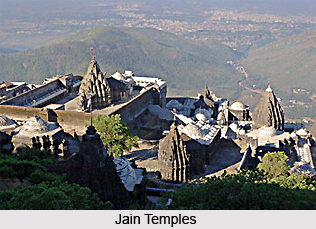 Hadavalli is a tiny village which is located at a distance of nearly 20 km from the region of Bhatkala in the district of Uttara Kannada, Karnataka. This place appeals to nature lovers as well as historians. Hadavalli is home to several Jain `Basadi`, which are based in Indragiri and Chandragiri Hills which face towards each other. Residents dwelling here believe that `tatwapada`, which are songs of principles used to be sung in the hills of Chandragiri and these songs were analyzed by some scholars seated on the summit of the Indragiri hills. For this very purpose, an elaborate sound system which consisted of a dome was developed which was placed in the area between the hills. There are two footprints in Indragiri which have been inscribed on stone. There exists a small basadi, which has no shrine, in Chandragiri. Hadavalli has been mentioned as `Sangeetapura` in history. It was said to be a hub for musicians, as well as a renowned centre for architecture and arts.
Hadavalli is a tiny village which is located at a distance of nearly 20 km from the region of Bhatkala in the district of Uttara Kannada, Karnataka. This place appeals to nature lovers as well as historians. Hadavalli is home to several Jain `Basadi`, which are based in Indragiri and Chandragiri Hills which face towards each other. Residents dwelling here believe that `tatwapada`, which are songs of principles used to be sung in the hills of Chandragiri and these songs were analyzed by some scholars seated on the summit of the Indragiri hills. For this very purpose, an elaborate sound system which consisted of a dome was developed which was placed in the area between the hills. There are two footprints in Indragiri which have been inscribed on stone. There exists a small basadi, which has no shrine, in Chandragiri. Hadavalli has been mentioned as `Sangeetapura` in history. It was said to be a hub for musicians, as well as a renowned centre for architecture and arts.
Temples and Basadis of Hadavalli
Despite the presence of numerable basadis in Hadavalli, a scanty number of basadis have withstood the ravages of time. The Chandranath basadi is amongst the very few basadis which boast of a rare excellence. A statue of Chandranath, who was a Jain Tirthankara is existent inside this basadi. The architecture of this ancient structure belongs to the 14th century, when it was the capital of the rulers of the Saluva dynasty. As many as 24 pillars support this basadi, which is adorned with marvellous carvings.
The other basadis are Neminath basadi and Parshwanath basadi which are situated near the Padmavati Temple. The Padmavati Temple boasts of statues of 24 Tirthankaras. Polished black stone, measuring over half a meter in length, has been employed to construct these statues. This temple seems like a residential home when viewed from outside and regular worshipping or `puja` is held in this temple, daily. The statues present in the temple are covered with tiny inscriptions. It is believed that 132 statues were removed from the interiors of this temple and taken for display in an exhibition in Belgaum, which ultimately, however, were not returned. Presently, the whereabouts of these statues is unknown.






